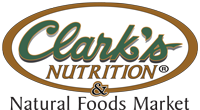Search Healthnotes
High-Fiber Diet

The Basics
The high-fiber diet aims to increase fiber intake to 25 to 40 grams per day, an amount linked to reduced risk of many chronic diseases, including cancer, heart disease, certain gastrointestinal conditions, and perhaps even obesity. As each has different benefits, both soluble fiber (found in beans, oats, and fruits) and insoluble fiber (found in vegetables, whole grains, and fruit skins) sources should be included in the diet. This diet does not restrict intake of any nutrients or foods; however, increasing fiber intake could naturally decrease calorie intake as high-fiber foods can be filling. This in turn could lead to weight loss.
- Get the right amount—The average American gets about 10 grams of fiber per day, while the USDA Dietary Guidelines recommends 20 to 25 grams per day.
- Easy does it—Increase fiber intake slowly to avoid unpleasant side effects.
- Stay hydrated—Be sure to drink adequate water when eating a high fiber diet.
Best bets: Beans and legumes, whole grains, fruits, and vegetables
Copyright © 2026 TraceGains, Inc. All rights reserved.
Learn more about TraceGains, the company.
The information presented by TraceGains is for informational purposes only. It is based on scientific studies (human, animal, or in vitro), clinical experience, or traditional usage as cited in each article. The results reported may not necessarily occur in all individuals. Self-treatment is not recommended for life-threatening conditions that require medical treatment under a doctor's care. For many of the conditions discussed, treatment with prescription or over the counter medication is also available. Consult your doctor, practitioner, and/or pharmacist for any health problem and before using any supplements or before making any changes in prescribed medications. Information expires December 2026.










